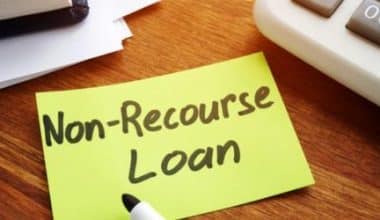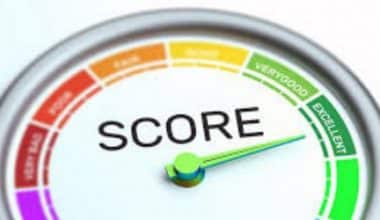Are you ready to embark on the exciting journey of homeownership? One crucial step in this process is obtaining a mortgage pre-approval. By obtaining a mortgage preapproval, you gain a clear understanding of your purchasing power, which allows you to shop for homes with confidence and negotiate favorable terms. Whether you’re a first-time homebuyer or a seasoned homeowner, securing a mortgage preapproval provides you with a strong foundation on your path to homeownership. In this article, we will guide you through the steps of getting a mortgage preapproval while highlighting key aspects such as the mortgage pre-approval letter, the possibility of a preapproval without a credit check, utilizing a preapproval mortgage calculator, and even exploring the preapproval process with Wells Fargo.
How to Get a Mortgage Preapproval
Obtaining a mortgage preapproval entails numerous processes that can help you determine your eligibility and set a budget for purchasing a home:
#1. Gather Financial Documents
Begin by gathering important financial records such as pay stubs, W-2 forms, bank statements, and tax returns. These documents demonstrate your earnings, assets, and financial stability.
#2. Research Mortgage Lenders
Take the time to investigate and compare various mortgage lenders. Look for reliable lenders with competitive rates and conditions that meet your requirements.
#3. Contact a Lender
Once you’ve decided on a lender, contact them and indicate your desire to obtain a mortgage pre-approval. They will walk you through the steps and provide you with instructions on how to proceed.
#4. Submit Financial Information
Provide your lender with the financial details that they require. This normally includes information about your job, income, debts, and possessions.
#5. Credit Investigation and Evaluation
The lender will examine your credit history to determine your creditworthiness. They will also assess your financial situation, including your debt-to-income ratio, to determine your ability to repay the mortgage.
#6. Preapproval Letter
If you meet the lender’s requirements, you will receive a pre-approval letter. This paperwork states your loan amount and tells sellers that you are a genuine buyer with financing in place.
Mortgage Pre-Approval Letter
A mortgage pre-approval letter is a document provided by a lender that confirms your eligibility for a home loan. It states the loan amount you qualify for, based on a preliminary review of your financial information. This letter is valuable when making an offer on a house, as it demonstrates to sellers that you have the financial means to purchase the property.
To obtain a mortgage pre-approval letter, you must go through the pre-approval process with a lender. Once you have the letter, it’s important to carefully review its terms and conditions, as well as any expiration date. Keep in mind that a preapproval letter is not a final loan commitment, and additional documentation and verification will be required during the mortgage application process.
Mortgage Pre-Approval Without Credit Check
Obtaining a mortgage pre-approval typically involves a credit check to assess your creditworthiness. However, some lenders offer preapprovals without conducting a hard credit inquiry, known as a preapproval without a credit check. These types of preapprovals may rely on alternative methods to evaluate your financial situation, such as income verification and asset documentation. While it can be convenient to get preapproval without a credit check, it’s important to note that it may have limitations. For instance, the loan amount you qualify for may be lower, and the terms and interest rates may differ from a traditional preapproval. It’s advisable to consult with lenders to understand their specific preapproval requirements and options.
Pre-Approval Mortgage Calculator
A useful tool for determining your prospective mortgage pre-approval amount is a mortgage preapproval calculator. Your income, debt-to-income ratio, credit score, and preferred loan terms are among the things it considers. The calculator can approximate the amount of the mortgage for which you might be preapproved by entering this information. It’s crucial to remember that a preapproval calculator cannot take the place of an official preapproval procedure with a lender. The findings of the calculator may not accurately represent the particular terms and conditions provided by lenders because they are based on broad assumptions. It is advised to complete a preapproval application with a lender to receive a precise preapproval amount.
Wells Fargo Mortgage Pre Approval
Wells Fargo offers mortgage pre-approval services to help borrowers determine their eligibility for a home loan. Through the preapproval process, borrowers can provide their financial information to Wells Fargo, including income, assets, and credit history.
Wells Fargo will evaluate this information and issue a pre-approval letter indicating the maximum loan amount the borrower is eligible for. This letter can be useful when making an offer on a home, as it demonstrates to sellers that you are a serious buyer with the financial means to secure a mortgage. To initiate the Wells Fargo mortgage pre-approval process, you can apply online, visit a branch, or contact a Wells Fargo mortgage consultant. They will guide you through the necessary steps and documentation required for a thorough evaluation of your eligibility.
How Long Does Mortgage Pre-approval Take?
Several variables can affect how long the mortgage pre-approval process takes. The pre-approval procedure may take a few days to a few weeks to finish on average. The complexity of your financial situation, the lender’s responsiveness, and the number of applications they are currently processing are just a few examples of the variables that can affect the timeframe.
It’s critical to have the required paperwork prepared, reply to lender inquiries right away, and supply correct and complete information to speed up the procedure. You can obtain a pre-approval decision sooner by using an online pre-approval application or consulting a mortgage professional, both of which can expedite the procedure.
What Documents Do You Need for a Mortgage Preapproval?
To be preapproved for a mortgage, you will normally need to submit several crucial papers. To prove your work and earnings, you must first present proof of income, such as pay stubs or W-2 forms. However, to prove your financial stability, you will also need to present proof of your assets, such as bank and investment account statements. You will also be required to present identifying documents to prove your identity, such as a current driver’s license or passport.
To determine your debt-to-income ratio, you must also give proof of your debts, such as credit card and loan statements. Last but not least, depending on your particular financial status, you may need to provide additional supporting documents such as tax returns, leasing agreements, or divorce judgments. However, understanding the particular documentation needed for your mortgage preapproval application requires speaking with your lender.
How Far in Advance Should I Get Pre-approved for a Mortgage?
Getting pre-approved for a mortgage is an important step in the home-buying process. Ideally, it’s recommended to get pre-approved before you start actively searching for a home. This allows you to understand your budget and gives you a competitive edge when making an offer.
Get mortgage pre-approval three to six months before buying a home. This timeframe allows you to gather documentation, fix credit difficulties, and shop for the best mortgage conditions. Pre-approval helps you uncover potential hurdles to getting a mortgage. Before applying for a mortgage, you can enhance your credit score or finances.
Additionally, obtaining a pre-approval letter in advance provides you with a clear understanding of your purchasing power. Knowing your maximum loan amount helps you search for homes within your budget. To streamline the homebuying process and impress sellers, get pre-approved for a mortgage early on.
What Are the 3 Steps to Get Pre-approved for a Mortgage?
Getting pre-approved for a mortgage involves three main steps.
- Gather all the necessary financial documents, such as income statements, bank statements, and tax returns.
- Contact a lender or mortgage broker to start the pre-approval process. They will review your financial documents, assess your creditworthiness, and determine the maximum loan amount you qualify for.
- Receive the pre-approval letter from the lender, which states the approved loan amount and terms. This letter is an essential document when making an offer on a home, as it demonstrates to sellers that you are a serious and qualified buyer.
By following these three steps, you can successfully obtain a mortgage pre-approval and be better prepared to navigate the home-buying process.
What Credit Score Is Needed for Pre Approval?
The credit score needed for mortgage pre-approval can vary depending on the lender and loan program. However, a higher credit score generally improves your chances of getting pre-approved for a mortgage. Most lenders prefer borrowers to have a credit score of 620 or higher to qualify for a mortgage. However, some loan programs, such as FHA loans, may accept lower credit scores, often starting around 580. It’s important to note that a higher credit score can also result in more favorable loan terms, such as lower interest rates.
In addition to the credit score, lenders consider other factors like your income, employment history, and debt-to-income ratio when evaluating your mortgage application. It’s recommended to strive for a good credit score to increase your chances of pre-approval and secure more favorable loan options.
Is It Possible to Get Pre-approved for a Mortgage?
Yes, it is feasible to obtain a mortgage pre-approval. Many lenders provide pre-approval services to assist prospective homeowners in determining their loan eligibility. To get pre-approved for a mortgage, you must furnish the lender with the relevant financial information and proof. This contains information about your income, work history, assets, and debts. The lender will next assess your information and creditworthiness to determine the amount of loan you may be eligible for.
Pre-approval clarifies your budget and allows you to make more informed judgments when property hunting. It also shows sellers that you’re a serious buyer, which could give you an advantage in competitive real estate markets. However, pre-approval is not a guarantee of final loan approval because other variables will be evaluated during the underwriting process.
How Much Can I Borrow for a Mortgage Based on My Income?
The amount you can borrow for a mortgage based on your income will depend on several factors, such as your debt-to-income ratio, credit score, and the lender’s criteria. Lenders typically use a debt-to-income ratio to determine the maximum loan amount they can afford. This ratio compares your monthly debt payments to your monthly income. The general guideline is that your total monthly debt, including the mortgage payment, should not exceed a certain percentage of your income, often around 43%. Additionally, lenders consider your credit score, which reflects your creditworthiness. A higher credit score generally allows you to qualify for larger loan amounts and better interest rates.
It’s important to note that while income is a significant factor in determining your borrowing capacity, lenders also consider other factors such as employment history, down payment amount, and overall financial stability. Consulting with a mortgage professional will provide more accurate information about the specific loan amount you can borrow based on your income and financial situation.
What Credit Score Is Good for Buying a House?
A good credit score for buying a house is typically considered to be 680 or higher. A higher credit score demonstrates responsible credit management and increases your chances of securing a favorable mortgage loan. However, it’s important to note that credit score requirements may vary among lenders, and other factors such as income, employment history, and down payment amount also play a role in the mortgage approval process.
FAQs
Is it easy to get pre-approved?
Getting pre-approved for a mortgage is simple and one of the most important things you can do when planning to buy a home. Mortgage pre-approvals are documents that confirm your eligibility for a mortgage loan.
What should I bring to a pre-approval loan?
Proof of employment, assets, income tax returns, and an acceptable credit score are all required for pre-approval. Typically, mortgage pre-approval letters are good for 60 to 90 days.
What happens after pre-approval?
To finalize your house loan, you will need to obtain formal approval from the lender. As a condition of your preapproval, you must give your lender or broker documentation such as the signed contract of sale and any other supplementary documents necessary by the lender.
Related Articles
- MORTGAGE PROCESS: Step-by-step Guide
- How Long Is A Mortgage Pre-Approval Good For?
- 8 Tips to Apply For Agriculture Loan as a Farmer
- How To Get A Mortgage: Step-by-step Guide With The Requirements
- REAL ESTATE SALES: Step-by-Step Guide To The Sales Process






